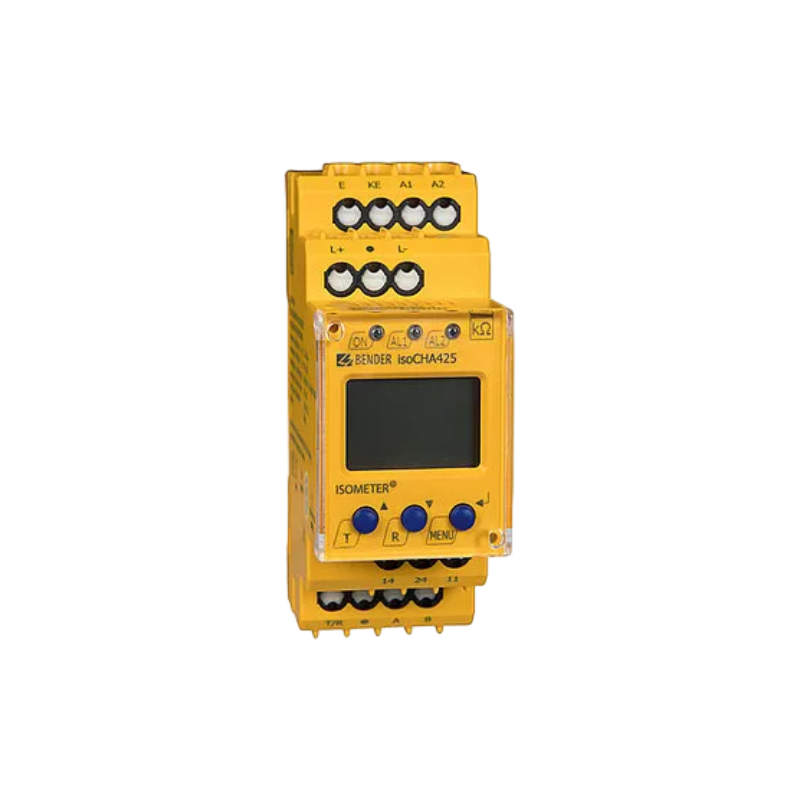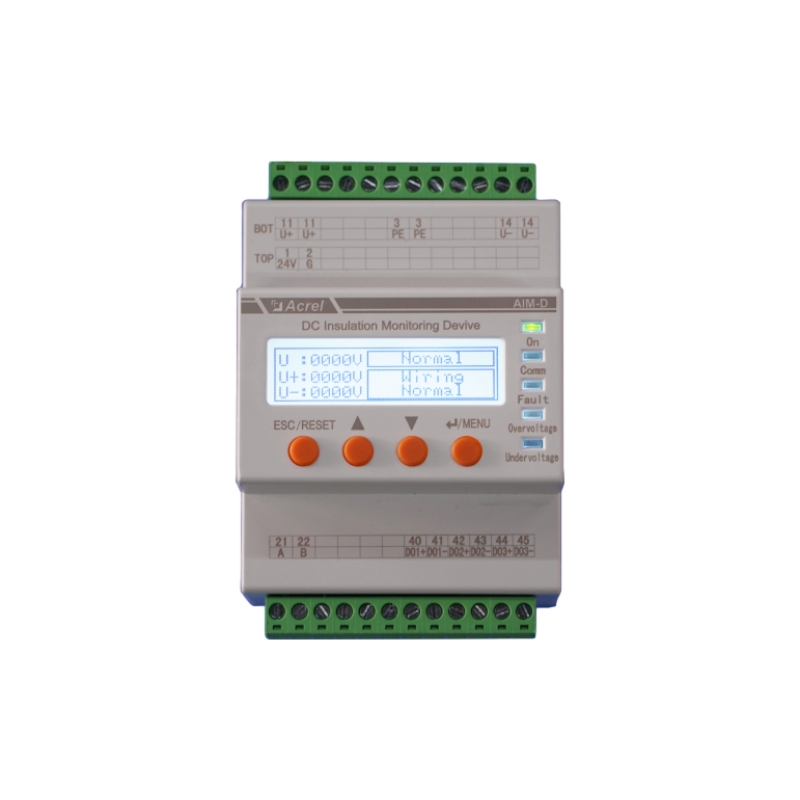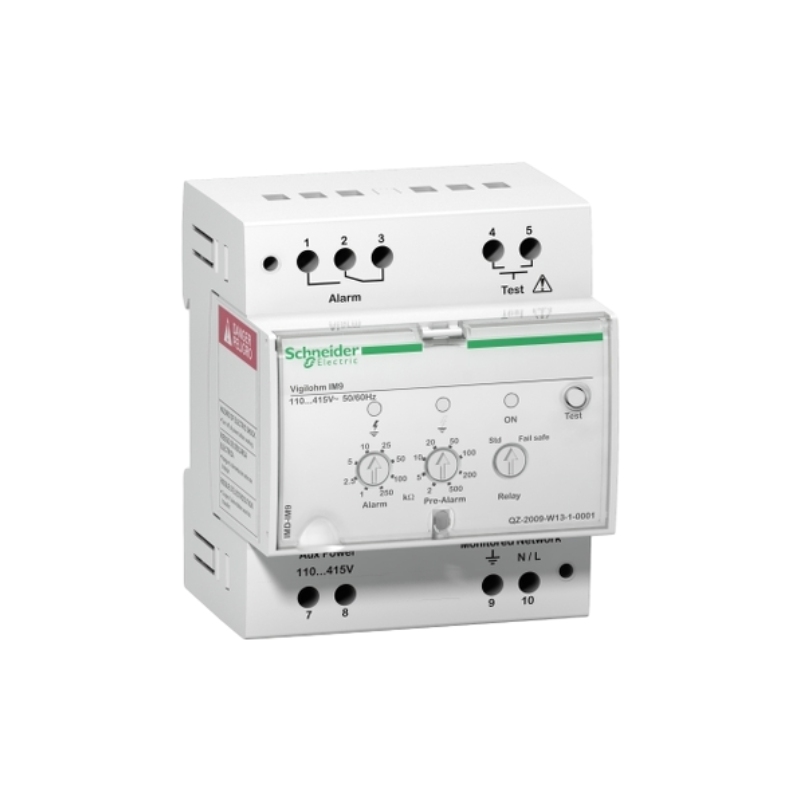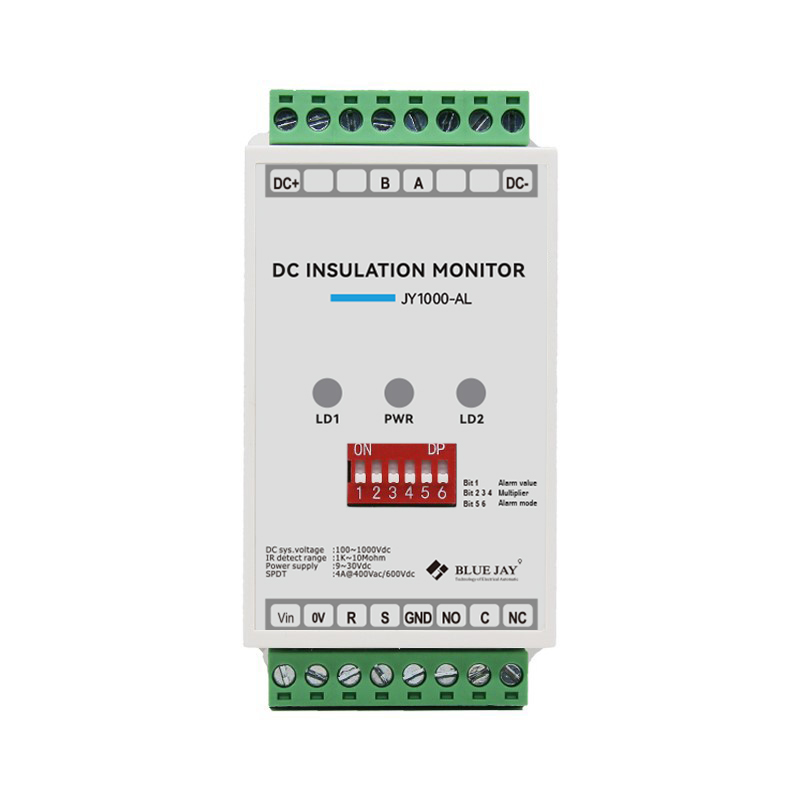Advantages:
- Monitoring the insulation resistance for DC charging stations according to CCS or CHAdeMO
- Detection of asymmetrical insulation faults in the DC system voltage range between 50 V und 400 V within 1 s
- Detection of symmetrical insulation faults within 10 s
- Measurement of the system voltage (true RMS) with undervoltage and overvoltage detection
- Measurement of DC system voltages to earth (L+/PE and L-/PE)
Specification
- Monitoring of the insulation resistance RF of DC charging stations in accordance with the CHAdeMO standard or Combined Charging System (CCS).
- CHAdeMO (Mode CHd):
– Maximum system leakage capacitance 1.6 μF per conductor
– Detection of insulation faults in the system voltage range from 50 V to 400 V
– Response for time one-pole insulation faults RFU:
• RFU ≤ 100 kΩ: max. 1 s
• 100 kΩ < RFU ≤ 2 MΩ: max. 10 s
– Response time for two-pole insulation faults RFS: max. 10 s - CCS (Mode dc):
– Detection of insulation faults up to 2 MΩ
– Maximum system leakage capacitance Ce: 5 μF
– Response time tan at Ce ≤ 5 μF or RF ≤ 100 kΩ: max. 10 s
• Measuring the system leakage capacitance Ce
• Measuring the nominal system voltage Un (true RMS) with undervoltage/overvoltage detection
• Measuring the residual voltages UL1e (between L+ and earth) and UL2e (between L– and earth)
- Selectable start-up delay, response delay and delay on release
- Two separately adjustable response value ranges from 5…250 kΩ (prewarning, alarm)
- Alarm output via LEDs (‘AL1’, ‘AL2’), display, and alarm relays (‘K1’, ‘K2’)
- Automatic device self test with connection monitoring
- Selectable N/C or N/O relay operation
- Measured value indication via multi-functional LC display
- Activatable fault memory
- RS-485 (galvanically isolated) including the following protocols:
– BMS (Bender measuring device interface) for the data exchange with other Bender
devices
– Modbus RTU
– IsoData (for continuous data output) - Password protection against unauthorised changing of parameters
- Stop mode to disable the measuring pulse generator





